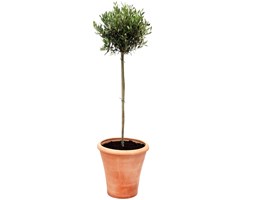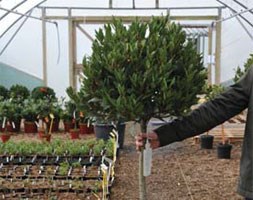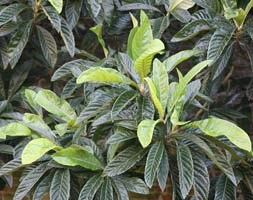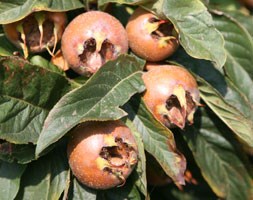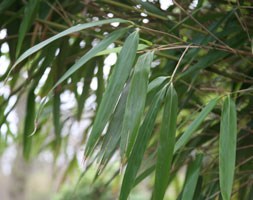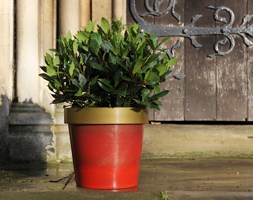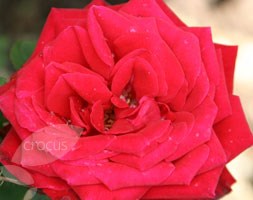New products at Crocus
by Sarah - July 18th, 2013.Filed under: Crocus, New Products.
Crocus has these new products today
Olea europaea (olive tree – (3/4 standard)) £69.99
Position: full sun Soil: deep, fertile, sharply drained soil (or loam-based potting compost for container-grown specimens) Rate of growth: slow-growing Flowering period: June to August Hardiness: frost hardy (needs winter protection in cold areas) As our climate gets milder, the popularity of olive trees continues to grow. Olives respond particularly well to pruning, and they look elegant and modern grown as standards with a long, clear stem. The leaves are pointed, grey-green and leathery and are retained all year. Tiny, fragrant, creamy-white flowers are followed in hot summers by edible, green fruits. Olive trees make excellent specimens for a sunny, Mediterranean-style garden, or try this standard in a large pot to frame an entrance or terrace. In milder winters it can be left outdoors in a sheltered spot, otherwise, it will need to be overwintered under glass. Garden care: To protect against wind damage stake using a low angled stake, driven into the ground on the windward side at a 45° angle. Water regularly during dry periods, keeping the planting area weed-free. Apply a top-dressing of a nitrogen-rich general purpose fertiliser twice or three times each year during the growing season. Size Guide: These 3/4 Standard plants have a 70-80cm clear stem with a 35-40cm diameter head TERRACOTTA POT NOT INCLUDED
Laurus nobilis (bay laurel (half standard)) £69.99
Position: full sun or partial shade Soil: fertile, moist but well-drained soil Rate of growth: slow-growing Flowering period: March to May Hardiness: frost hardy (needs winter protection) With its lustrous, dark green leaves, this evergreen, bay laurel half-standard, makes an elegant centrepiece for a formal vegetable garden or potager. It also looks really smart planted up in a smart contemporary pot either side of a doorway to frame an entrance. Clippings of the aromatic leaves are valuable, fresh or dried, for flavouring savoury stocks and sauces. It is pretty tolerant of most conditions, provided it is sheltered from strong, cold winds, and is not kept too wet in winter. This is a larger than average half standard. It measures approximately 135cm tall in total with a 55cm diameter head. Garden care: Keep well-watered during the growing season and feed with a slow-release fertiliser such as Scotts Controlled Release Tablets. Clip established plants lightly twice during the summer months to retain a balanced shape, using secateurs not shears.
Eriobotrya japonica (Japanese loquat) £39.99
Position: full sun Soil: fertile, well-drained soil Rate of growth: fast-growing Flowering period: September to December Flower colour: white Other features: the flowers are followed occasionally in spring by pear-shaped, edible, orange-yellow fruit; Hardiness: frost hardy (may need protection in winter) Whorls of handsome, boldly veined, dark-green leaves provide a foil for clusters of fragrant, white flowers in autumn. This vigorous, evergreen shrub is perfect for growing against a large, sheltered, sunny wall. For maximum results provide fertile, well-drained soil and adequate space for the plant to spread. Garden care: Requires minimal pruning. In February or March remove any misplaced, diseased or dead branches to maintain a permanent, healthy framework.
Borinda fungosa (chocolate bamboo) £39.99
Position: full sun or partial shade Soil: humus-rich, moist, well-drained soil Rate of growth: fast Leaves: lime to mid-green Canes: green, turning reddish in sunnier spots Hardiness: fully hardy New canes emerge in early summer, upright at first, but becoming more arching under the weight of the unfurling, light to mid-green leaves. When grown in sunnier spots, the canes will slowly turn shades of rich chocoalte-red, thus creating a wonderful contrast to the foliage. Formerly listed as a Fargesia, it is a larger and more vigorous form and has been reclassified. It is still very rare here in the UK, so it should appeal to aficionados and plant collectors. Garden care: Do not allow to dry out while the plant is getting established. Protect from cold, drying winds.
medlar (medlar) £39.99
Position: full sun or light shade Soil: fertile, moist but well drained Rate of growth: average Flowering period: April to May Flower colour: white, sometimes flushed pink Other features: delicious fruits in late autumn and early winter Hardiness: fully hardy A spreading, small tree with dark green leaves that turn shades of yellow and brown in autumn. In late spring white, bowl-shaped flowers (often with a flush of pink) clothe the branches and these are followed by russet brown, edible fruits that around the size of a small apple. These are ready to harvest after the first frosts, and after picking should be left to ripen for several weeks until the flesh has turned brown, soft and sweet and can be scooped out with a spoon. Garden care: When planting incorporate lots of well-rotted garden compost in the planting hole and stake firmly.
Pseudosasa japonica (arrow bamboo) £29.99
Position: full sun or partial shade Soil: humus-rich, moist, well-drained soil Rate of growth: fast-growing Leaves: dark green, oblong Canes: olive green, maturing to pale beige and dark green Hardiness: fully hardy Tall, vigorous bamboo with olive canes maturing to pale beige and dark green oblong leaves. Arrow bamboo is one of the most wind and shade tolerant varieties. Broadly upright in habit, as long as the roots are surrounded with a non-perishable barrier it makes an attractive screen or windbreak for moist, well-drained areas of the garden. Garden care: Plant in a large container or surround the roots with a non-perishable barrier that restricts the plant’s spread.
Himalayacalamus hookerianus ‘Himalaya Blue’ (blue bamboo) £24.99
Position: full sun or partial shade Soil: humus-rich, moist, well-drained soil Rate of growth: fast growing Leaves: mid-green Canes: blue with purple tints fading to yellow Hardiness: frost hardy (may need protection in their first winter) A hardier, bluer variety that was found growing at altitudes above 2800m (8400ft) in the Himalayas. This bamboo is a relatively recent introduction to the UK where it is prized for its colourful canes. They emerge each year in early summer in shades of green and slowly become bluer over a period of a couple of years. They finally fade after a couple of years to a greeny-yellow with hints of purple. It has delicate looking foliage and a very upright habit so is great for adding vertical interest. As it is a clump forming variety it is not invasive, but it will spread to around 3m across. It looks stunning planted up in a large pot (just make sure you keep it well watered) or planted next to water. Garden care: It will thrive in a cool, moist, shaded position with protection from cold dry winds. Avoid very heavy soils that get waterlogged for long periods in winter. It can cope with snow and temperatures down to -9C in its native environment once it is well established, however it will need a little help to settle in here in the UK, so protect it with fleece for its first few winters.
Laurus nobilis (bay ball (30-35cm)) £22.99
Position: full sun or partial shade Soil: fertile, moist but well-drained soil Rate of growth: slow-growing Flowering period: March to May Flower colour: clusters of greenish-yellow flowers Other features: black autumn berries on female plants; contact with the foliage may aggravate skin allergies; the mature leaves may be used fresh or dried in bouquet garni, for flavouring stocks and sauces Hardiness: frost hardy (needs winter protection) These evergreen bay laurel balls are great for flanking a set of steps, a doorway or path. Provide a sheltered, sunny or partially shady site and winter protection in cold areas since the lustrous, aromatic, dark green leaves, valuable for their culinary use, are susceptible to wind scorch. Garden care: Keep well-watered during the growing season and feed with a slow-release fertiliser such as Scotts Controlled Release Tablets. Clip established plants lightly twice during the summer months to retain a balanced shape, using secateurs not shears.
Rosa ‘Ruby Wedding’ (rose Ruby Wedding (hybrid tea)) £17.99
Position: full sun Soil: fertile, humus-rich, moist, well-drained soil Rate of growth: fast-growing Flowering period: July to September Flower colour: ruby-red Other features: excellent cut-flowers Hardiness: fully hardy Subtly scented, double, ruby-red flowers from July to September and masses of glossy, dark green leaves. This vigorous, repeat-flowering bush rose is perfect for the front of a sunny border with fertile, moist, well-drained soil. An excellent gift for a 40th wedding anniversary, the beautifully shaped blooms on stiff stems make excellent cut-flowers. Garden care: Before planting shorten thick roots to 25cm (10in) and reduce top-growth to an outward-facing bud 8-15cm (3-6in) above ground-level. Plant during a frost-free spell, incorporating well-rotted organic matter and a balanced fertiliser into the planting hole. Ensure that the ‘bud union’ (the bulge at the base of the shoots) is at soil level. All our roses are field grown. In October/November they are dug up and potted. However, they will not produce any new roots until spring, so don’t be surprised if the compost falls away from the roots when winter planting. Some suppliers send out ‘bare root’ plants unpotted, but we don’t as it is easier to manage them on the nursery in pots.







